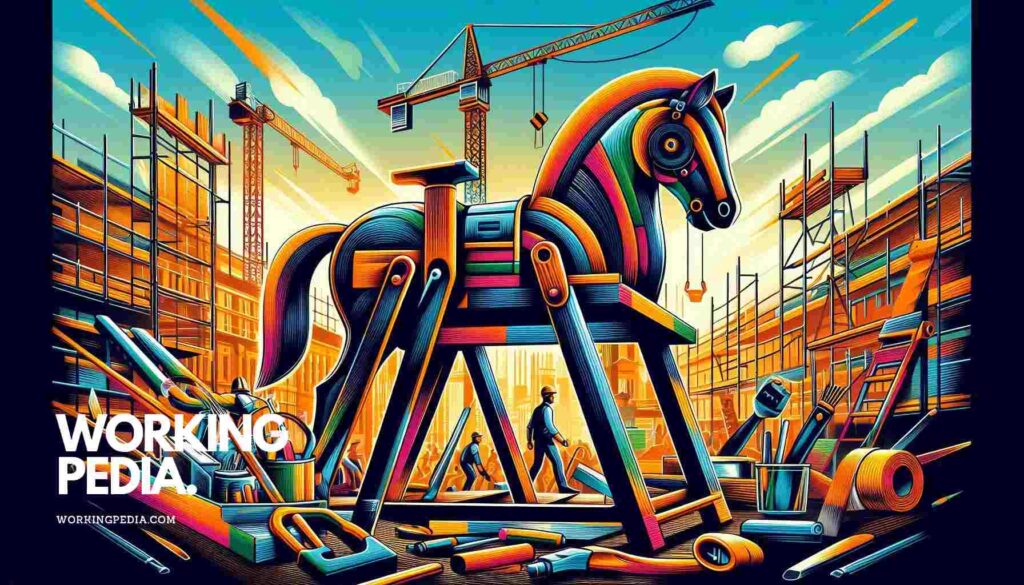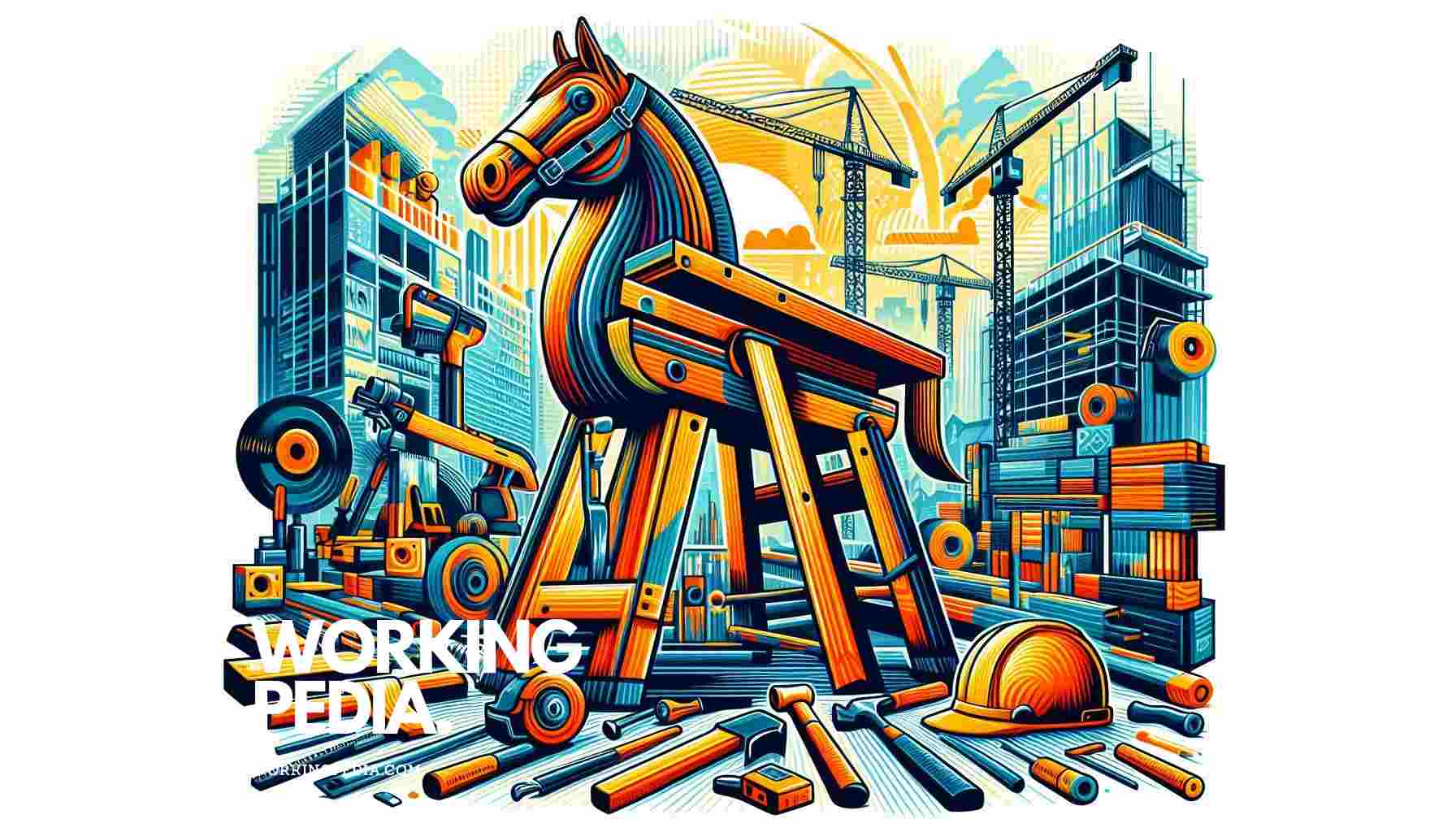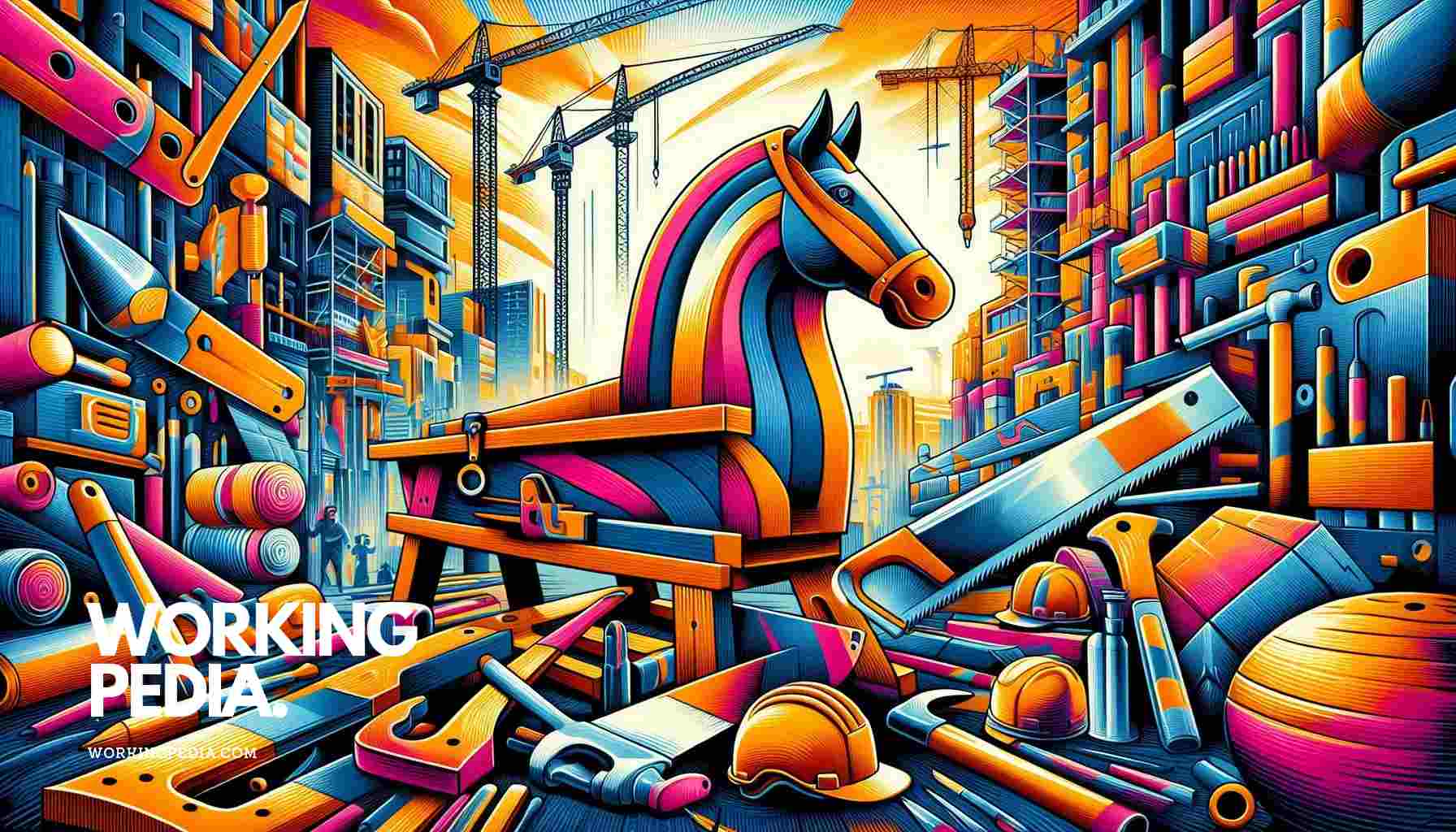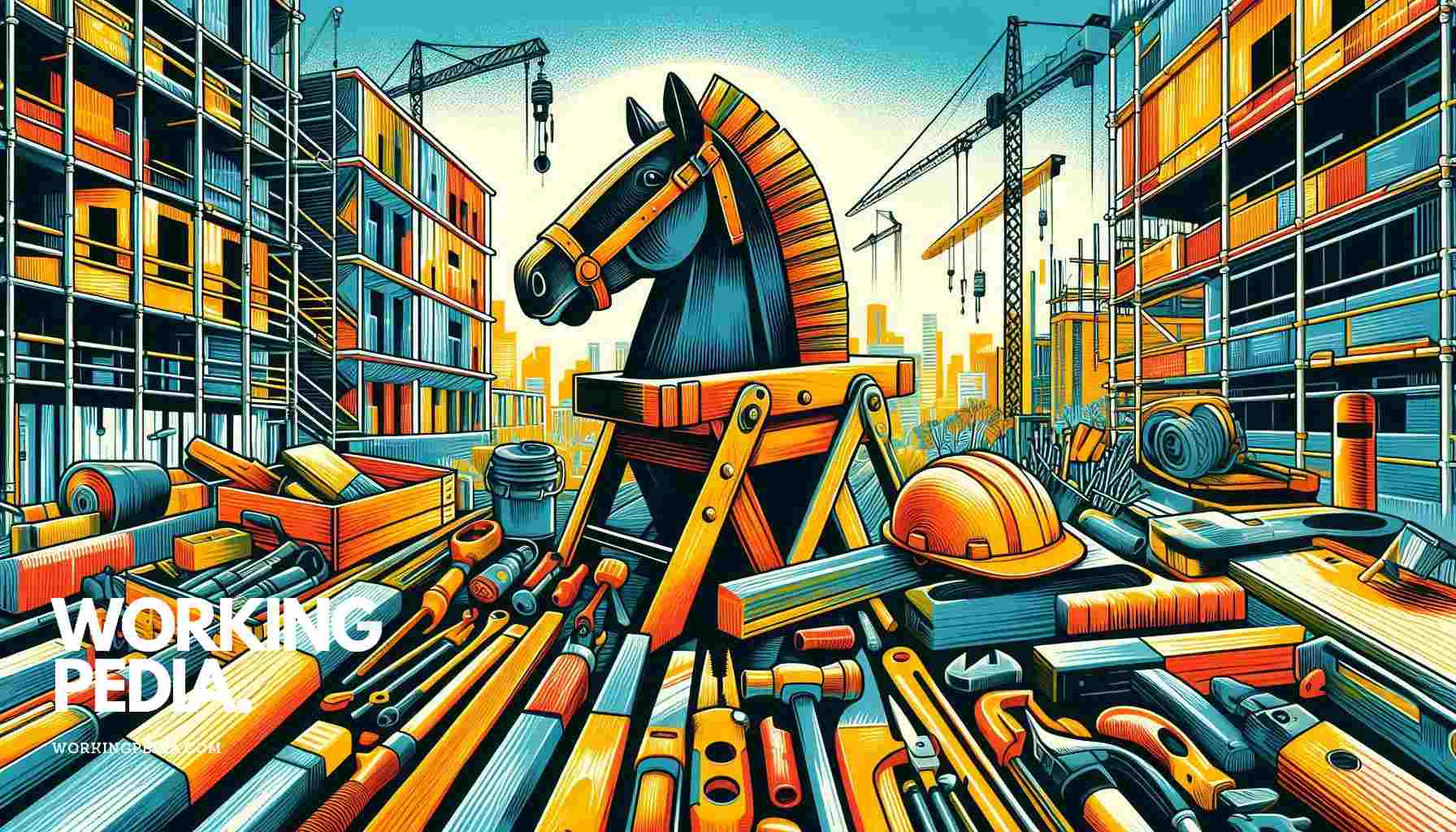Ever heard of a construction horse? No, it’s not a four-legged animal wearing a hard hat! A construction horse, also known as a sawhorse or trestle, is an indispensable piece of equipment on building sites. These sturdy, beam-like supports have been the unsung heroes of construction projects for centuries, providing a stable foundation for countless tasks.From supporting heavy materials to creating makeshift workbenches, construction horses play a crucial role in ensuring efficiency and safety on job sites. Their versatility and durability make them a must-have for both professional contractors and DIY enthusiasts alike.
Key Takeaways
- Construction horses are versatile support structures used in building projects
- They provide stability for various tasks and improve worksite safety
- These tools come in different materials and designs to suit various needs
- Proper use and maintenance of construction horses is essential for longevity
- Investing in quality construction horses can significantly enhance productivity

What is a Construction Horse?
A construction horse, in its simplest form, is a beam with four legs – two at each end. It’s designed to support heavy loads and provide a stable work surface. These handy tools have been around for ages, with evidence of their use dating back to ancient civilizations. I remember my grandpa’s old wooden sawhorse, sturdy as an ox and built to last a lifetime!
Modern construction horses come in various materials, including wood, metal, and plastic. Each type has its own advantages, depending on the specific needs of the project. For instance, metal horses are incredibly durable and can support heavier loads, while plastic ones are lightweight and easy to transport.
Types of Construction Horses
There’s a whole stable of construction horses out there, each with its own unique features. Let’s take a look at some of the most common types:
Traditional Wooden Sawhorses
These are the classics – simple, sturdy, and often homemade. They’re great for light to medium-duty tasks and can be easily customized. I’ve built a few of these myself, and let me tell you, there’s something satisfying about using a tool you’ve made with your own hands!
Folding Metal Sawhorses
Perfect for those who need portability without sacrificing strength. These bad boys can be folded flat for easy storage and transport. I once saw a contractor fit a dozen of these in the back of his pickup – talk about efficient use of space!
Heavy-Duty Steel Horses
When you need to support serious weight, these are your go-to. They’re often adjustable in height and can handle loads that would make other horses buckle. I’ve used these on large-scale commercial projects, and they’re absolute workhorses (pun intended).
Plastic Sawhorses
Lightweight and weather-resistant, these are ideal for outdoor use or when you need to move your setup frequently. They mightn’t look as tough as their metal counterparts, but don’t be fooled – many can support impressive loads.
Benefits of Using Construction Horses
Now that we’ve covered the types, let’s talk about why these simple tools are so darn useful. Trust me, once you start using construction horses regularly, you’ll wonder how you ever managed without them!
Versatility
Construction horses are the Swiss Army knives of the building world. They can be used for cutting, as temporary tables, material support, and even as impromptu scaffolding (though always follow safety guidelines!). I’ve seen them used in ways that would make MacGyver proud.
Improved Safety
By providing a stable work surface and keeping materials off the ground, construction horses significantly reduce the risk of accidents. They help maintain good posture and reduce strain on your back – something your future self will thank you for!
Increased Efficiency
With materials at a comfortable working height, tasks become quicker and easier. It’s amazing how much time you can save when you’re not constantly bending down or trying to balance things precariously. I once timed myself doing the same task with and without sawhorses – the difference was staggering!
Space Optimization
In cramped work areas, construction horses can help you make the most of vertical space. By creating raised work surfaces, you can utilize the area underneath for storage or additional work space. It’s like adding an extra dimension to your job site!
Choosing the Right Construction Horse
Picking the perfect construction horse isn’t rocket science, but there are a few factors to consider. Here’s what to keep in mind:
Load Capacity
This is probably the most important factor. Consider the heaviest materials you’ll be working with and choose a horse that can comfortably support that weight (with a safety margin). Remember, it’s always better to have too much capacity than not enough!
Material
Wood is classic and easy to modify, metal is super strong, and plastic is lightweight and weather-resistant. Think about your specific needs and working conditions. For instance, if you’re often working outdoors, a rust-resistant option might be best.
Portability
If you’re constantly moving between job sites, folding or lightweight options might be your best bet. On the other hand, if you’re setting up a more permanent workshop, sturdier, non-folding models could be ideal.
Height and Adjustability
Consider the height that’s most comfortable for you to work at. Some models offer adjustable height, which can be a game-changer if you’re tackling a variety of tasks or if multiple people will be using the horses.
Additional Features
Some construction horses come with built-in clamps, shelves, or even power outlets. While these aren’t necessary, they can be handy depending on your typical projects.
As we move into the second half of our discussion on construction horses, we’ll delve deeper into proper usage techniques, maintenance tips, and some creative applications that might surprise you. Whether you’re a seasoned pro or a DIY newbie, there’s always more to learn about these versatile tools!

Proper Usage and Safety Tips
Now that we’ve covered the basics, let’s talk about how to use these bad boys safely and effectively. Trust me, I’ve seen my fair share of construction horse mishaps, and they’re not pretty!
Stability is Key
Always place your horses on a flat, stable surface. I once saw a guy set up on a sloped driveway – let’s just say it didn’t end well. If you’re working on uneven ground, take the time to level things out. Your back (and your project) will thank you.
Even Weight Distribution
When loading materials, try to distribute the weight evenly across the horses. Overloading one side is a recipe for disaster. I learned this the hard way when I was a rookie – ended up with a face full of plywood!
Regular Inspections
Before each use, give your horses a quick once-over. Look for any signs of damage, loose parts, or wear and tear. It only takes a minute, but it can save you from a world of hurt.
Proper Placement
When setting up your work area, make sure you’ve got enough space around your horses. You don’t want to be tripping over them or knocking into them while you’re working. I like to leave at least 3 feet of clearance on all sides.
Maintenance and Care
Proper maintenance of your construction horses (sawhorses) is not complicated, but consistent care can significantly extend their lifespan and ensure they perform at their best. With a bit of attention, your trusty sawhorses will remain reliable for years to come. Here’s a detailed guide on how to maintain and care for them:
Clean After Use
After each project, it’s important to give your construction horses a thorough cleaning. Over time, dust, dirt, sawdust, and other debris can accumulate on their surfaces, which may interfere with their functionality. To avoid this, wipe them down after every use. A simple old rag stored in your toolbox is all you need for this task. By removing the build-up, you’ll ensure the surfaces remain smooth and free of obstructions, allowing for more efficient and safe usage during future projects.
Storage
Where you store your construction horses is crucial to their longevity. Ideally, they should be kept in a dry, climate-controlled environment to avoid any exposure to moisture, which can cause damage over time. This is especially critical for wooden sawhorses, as wood is more prone to warping, cracking, or rotting if exposed to damp or humid conditions. Designate a specific area in your workshop, garage, or storage space where they can be safely stowed away. For instance, I’ve set up a corner in my garage where my sawhorses stay dry, protected, and easily accessible whenever I need them..
Lubrication
If you’re using metal construction horses with hinges or adjustable parts, a little routine lubrication can go a long way in preserving their functionality. Over time, metal components may become stiff or corroded, which could lead to difficulty adjusting or folding the horses. A simple application of WD-40 or similar lubricant on the joints and moving parts every few months will ensure smooth operation. Pay attention to any parts that appear rusty or squeaky, and address them early to avoid long-term wear and tear.
Repairs
It’s important to regularly inspect your construction horses for any signs of wear, damage, or loose components. Small issues, such as a loose screw or a slightly wobbly leg, can quickly escalate if left unaddressed. By fixing these minor problems as soon as you notice them, you can avoid the need for more extensive repairs or replacements in the future. Tightening screws, reinforcing legs, or replacing damaged parts is always more cost-effective and safer than having to deal with a potential accident caused by faulty equipment.

Creative Applications
Construction horses aren’t just for, well, construction. These versatile tools can be used in all sorts of creative ways. Here are some of my favorite unconventional uses:
Temporary Furniture
Need extra seating for a backyard BBQ? Throw a sturdy board across two horses, cover it with a nice tablecloth, and voila – instant bench! I’ve even seen folks use them as the base for a rustic dining table.
Garden Helper
Construction horses can be great for gardening tasks. Use them to support planks for raised beds, or as a potting station. My wife loves using one as a stand for her hanging baskets when she’s planting.
Art Projects
For you artsy types out there, construction horses make great supports for canvases or sculpture projects. I once helped a buddy set up an outdoor painting studio using a pair of horses and an old door as a work surface.
Event Planning
Planning a garage sale or outdoor event? Construction horses can be used to create display tables, sign supports, or even as barriers. They’re sturdy, portable, and easy to set up – perfect for temporary installations.
As we wrap up our deep dive into the world of construction horses, I hope you’ve gained a new appreciation for these humble yet indispensable tools. Whether you’re a pro contractor or a weekend warrior, having a good set of horses in your arsenal can make all the difference in your projects.
Remember, the right tools don’t just make the job easier – they make it safer and more enjoyable too. So next time you’re tackling a DIY project or setting up a worksite, give some thought to how a trusty construction horse might help you out. You might just find yourself wondering how you ever managed without them!
Frequently Asked Questions
1. What is the weight capacity of a typical construction horse?
The weight capacity of construction horses can vary widely depending on the material and design. Lightweight plastic models might support around 500-1000 pounds, while heavy-duty steel horses can handle up to 2500 pounds or more. Always check the manufacturer’s specifications for your specific model. I once saw a guy overload a plastic horse – let’s just say it didn’t end well for his project!
2. Can I make my own construction horse?
Absolutely! Building your own wooden construction horse is a great DIY project. You’ll need some 2x4s, screws, and basic tools. There are plenty of plans available online. I built my first pair when I was just starting out – they weren’t pretty, but they got the job done!
3. How tall should a construction horse be?
The ideal height depends on your height and the type of work you’re doing. Most commercial horses range from 26 to 32 inches tall. For general use, a height that positions your work at about waist level is usually comfortable. Some models are adjustable, which is great if multiple people will be using them.
4. Are plastic construction horses durable?
Modern plastic construction horses can be surprisingly durable. They’re made from high-density polyethylene which is resistant to weather, chemicals, and impacts. While they may not be as strong as steel horses, they’re plenty tough for most jobs. I’ve had a pair of plastic horses for over a decade, and they’re still going strong!
5. How do I store construction horses when not in use?
For folding models, simply collapse them and store in a dry place. Non-folding horses can be stacked if they’re designed for it. Some people hang them on walls to save floor space. Just make sure they’re out of the way but easily accessible. I keep mine in the corner of my garage, ready for action at a moment’s notice.
6. Can construction horses be used as scaffolding?
While construction horses can provide elevated support, they’re not designed or approved for use as scaffolding. Using them this way can be dangerous. Always use proper scaffolding equipment for elevated work. I’ve seen some scary makeshift setups in my time – it’s just not worth the risk!
7. How often should I replace my construction horses?
With proper care, quality construction horses can last many years. Replace them if you notice significant wear, damage, or instability. For wooden horses, check for rot or splits. For metal, look for rust or bent components. Plastic horses should be replaced if they show signs of cracking or excessive flexing under load.
8. What’s the difference between a sawhorse and a construction horse?
The terms are often used interchangeably. Technically, a sawhorse is a specific type of construction horse designed for supporting wood for cutting. However, in practice, most people use the terms to refer to the same thing. It’s kind of like how all tissues are called Kleenex – it’s just become the common term.
9. Can I leave my construction horses outside?
It depends on the material. Plastic and some metal horses are designed to withstand outdoor conditions. Wooden horses should be brought inside or covered to protect them from moisture. If you must leave them outside, consider treating wooden horses with a water-resistant sealant. I learned this lesson the hard way after leaving my first set out in the rain!
10. Are there any alternatives to traditional construction horses?
Yes, there are several alternatives depending on your needs. Workmates, which are portable workbenches, can serve a similar function. For material support, roller stands or pipe stands can be useful. Some people even use sawhorses brackets, which allow you to create a sawhorse using your own lumber. Each has its pros and cons, but traditional horses are hard to beat for versatility!






